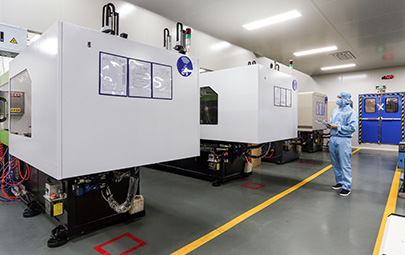The recycling problem of efficient depolymerized PET plastic bottles may be solved
- Date:2022-01-12
- Read:4482
Since the 19th century, human beings have made plastics, a convenient and cheap industrial product, which has become an indispensable part of industry and daily life. At the same time, it is difficult to degrade and has become the number one enemy of environmental protection. When micro plastics are found, the hazard level of plastics rises again.
The data show that the world produces 359 million tons of plastics every year, and the recycling efficiency of plastic waste is about 30%. According to the current industrial development system, the global plastic output may increase by 40% by 2030, and the plastic pollution in the ocean will double, which is expected to reach more than 300 million tons. This is a great disaster for the environment.
While ensuring the characteristics of plastic, how to degrade it quickly has also become a difficult problem that countless scientists want to solve. Searching all kinds of news and papers, we can find that we have made various attempts in degrading plastics.
Polyethylene terephthalate (PET) is one of the most commonly used plastics in the world, with an annual production of about 70 million tons. Although PET bottles can be recycled, the current recycling methods have problems, so that the recycling rate is only about 30%. In a small reactor designed to test enzymes, the research team from the University of
Toulouse found that an engineered enzyme can decompose 90% of 200g pet within 10 hours, and use terephthalic acid and ethylene glycol produced by enzymatic depolymerization to generate new pet plastic bottles. This new plastic is not much different from traditional plastics.
The advantage of this new method is that it can easily decompose various plastic mixtures (even pet plastic bottles of different colors) into simple terephthalic acid and ethylene glycol, while the dyes and other plastics in the mixture will not be decomposed, resulting in impact.
Plastics are high molecular compounds (macropolymers) which are polymerized by addition polymerization or polycondensation reaction with monomers as raw materials. They are composed of synthetic resin and fillers, plasticizers, stabilizers, lubricants, pigments and other additives. The main component of plastics is resin. What we usually call the refractory part is also resin. According to different added components, plastics can be divided into PP, PE, pet, PC, etc. among them, pet, polyethylene terephthalate, which is the most widely used, is the main raw material of mineral water bottles, carbonated beverage bottles and other products.
In 2012, some researchers found a cutinase called leaf branch composting (LCC) in composting, which can cut off the covalent bond between terephthalate and ethylene glycol and generate depolymerization products ethylene glycol and terephthalic acid, so as to realize the decomposition of pet. However, the depolymerization efficiency of LCC is easily limited by temperature. It is difficult to achieve the effect of practical application by stopping the reaction after working at 65 ℃ (glass transition temperature of PET) for a few days.
The pet hydrolase discovered by Alain Marty and other team members can work continuously without destroying pet at 72 ° C, and the decomposition ability of pet is greatly improved.
If the market promotion of this pet degrading enzyme can be realized, perhaps the troublesome problem of recycling and reuse of plastic bottles will be solved, which is great good news for the environment and economy.
PREVIn the future, three development trends of pharmaceutical plastic bottle industry
NEXTProcessing method of pet plastics
